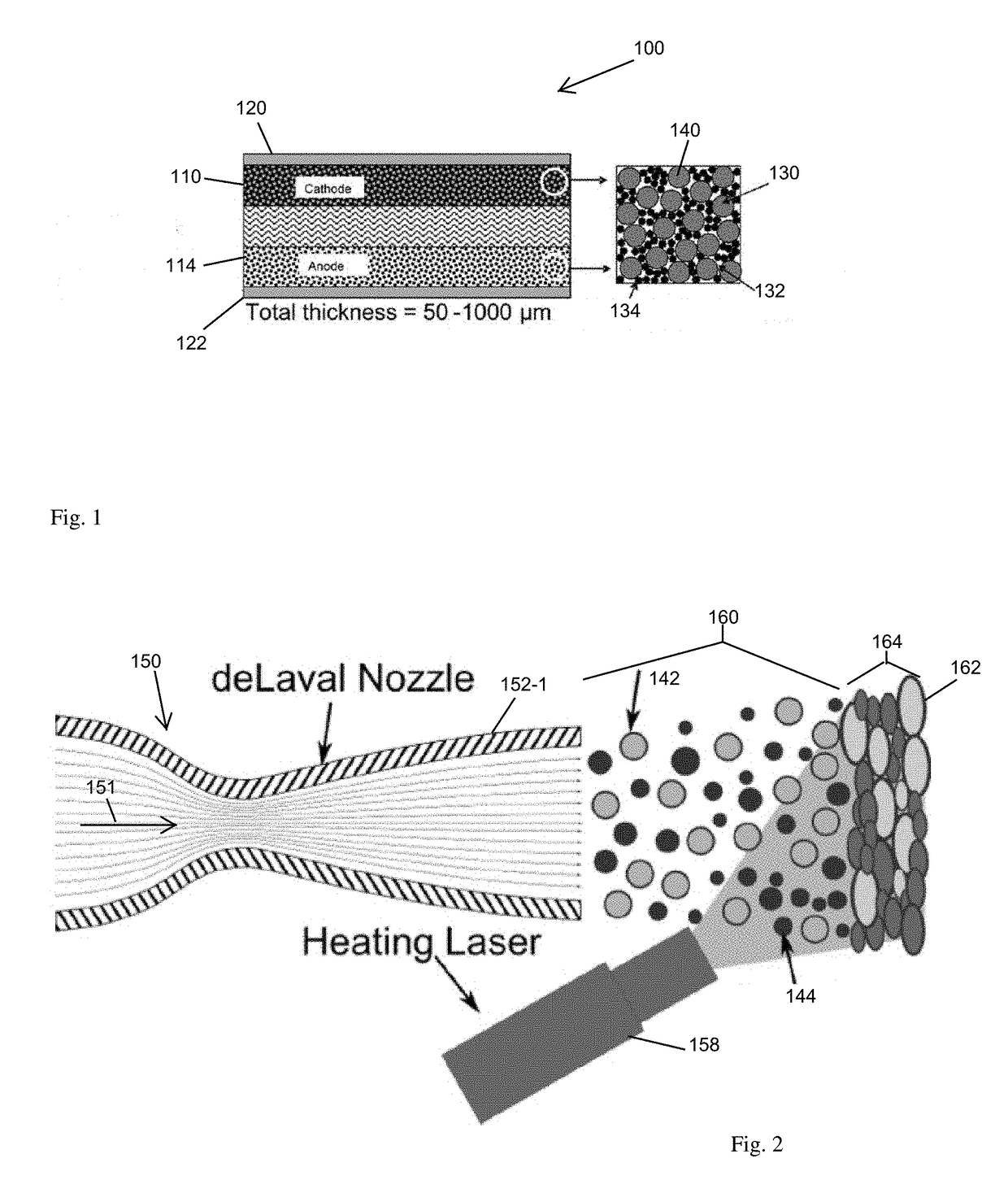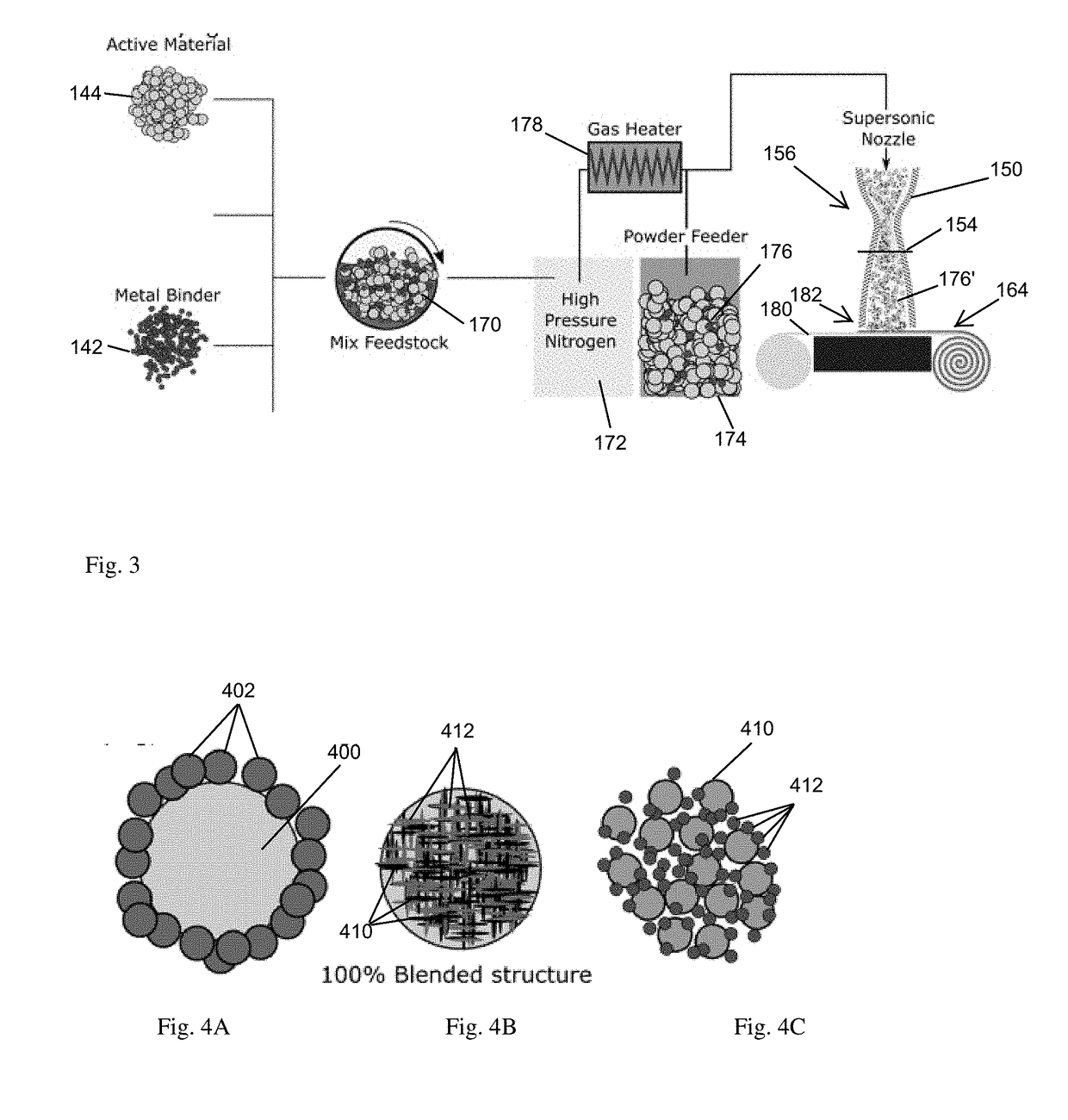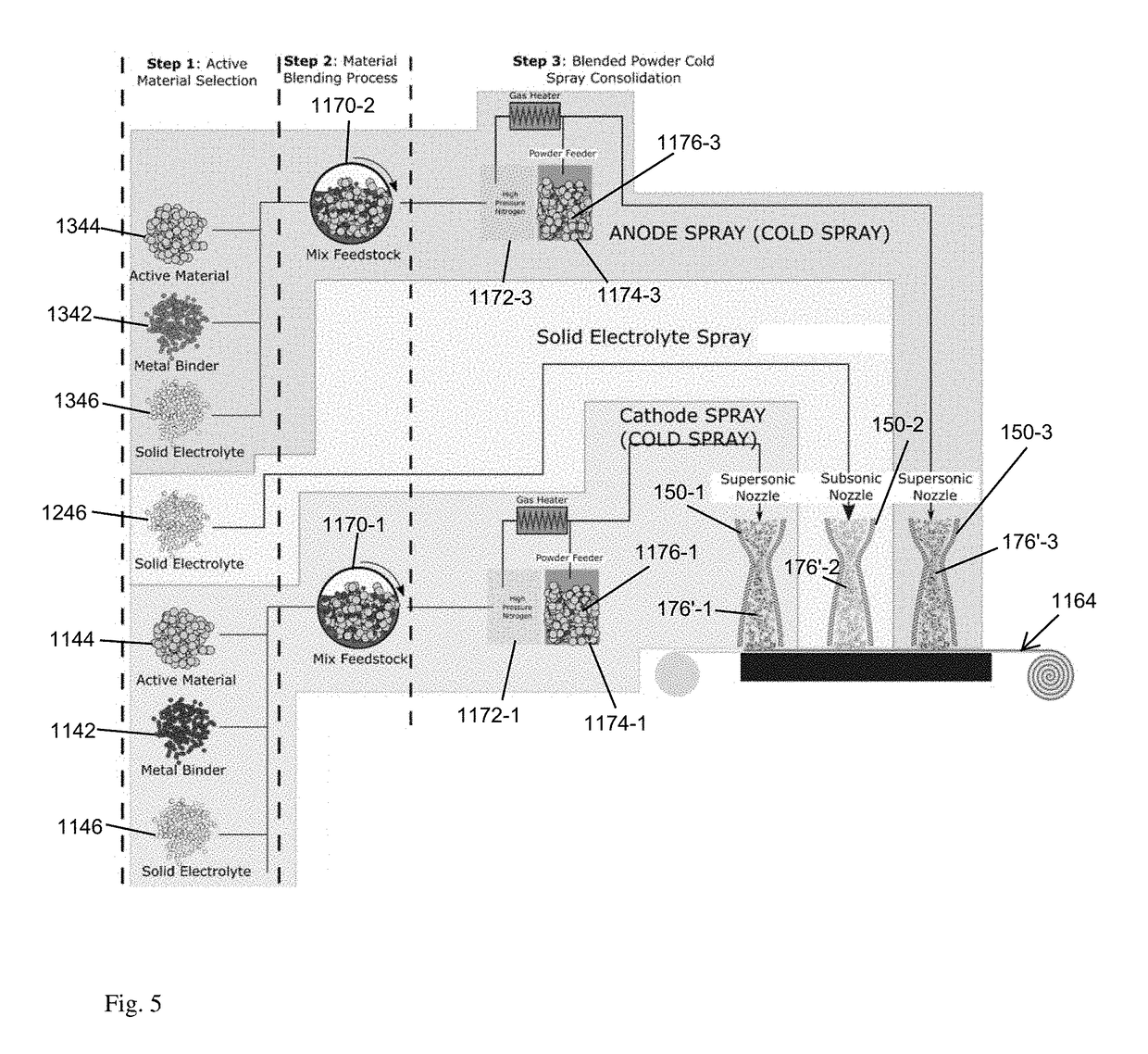[0003]A rechargeable lithium-ion (Li-ion) battery employs a solvent-less, low temperature approach to battery manufacturing that forms charge material from
kinetic energy of
high velocity particles impelled into an aggregation such that bombardment of the particles against other particles in the aggregation forms a charge conveying structure.
High velocity bombardment from a carrier gas
nozzle accumulates an active charge material (active material) and
metal binder in a layered arrangement for the finished battery. This
metal binder serves as the structural binding agent, the
electron conducting agent, and the deformation phase critical for cohesion of the sprayed
agglomerate particles. Preparation of the particles, such as by ball milling or
freeze drying, arranges particle agglomerations. The particle agglomerations, when impelled against other agglomerations or a current collector, forms a layer of cathodic, anodic or electrolytic battery material. The metallic binder conveys charge for mitigating or eliminating a need for a planar current collector underlying the sprayed layer. The resulting
layers are suitable for battery operation, and are manufactured in an absence of any solvent
drying or disposal.
[0004]Configurations herein are based, in part, on the observation that lithium ion batteries are achieving widespread popularity for mobile power needs of electric vehicles and personal devices. Rechargeable power supplies such as lithium ion batteries are generally sought for their
high energy density and their ability to deliver current at a
high rate. Unfortunately, conventional approaches to battery manufacturing suffer from the shortcoming of
solvent based approaches that impose
toxicity and environmental concerns for use, handling and disposal of the solvent. Accordingly, configurations herein substantially overcome the
toxicity and handling shortcomings by providing a spray based manufacturing method that forms
cathode,
anode and
electrolyte layers from
high velocity particle spraying that forces the charge materials into a conformant arrangement conducive to
charge generation and transport. Further, the flexibility of particle spray deposition to
electrode fabrication allows architecture of non-standard battery geometries to suit implementation
specific volume or electrochemical constraints.
[0005]A particle
stream of precision milled particles engages and accumulates the particles into a distribution suitable for battery operation, as successive particles are forced together in a binding arrangement sufficient for charge transport. Spraying, as employed herein, refers to impelling or forcing the particle agglomerations though a
nozzle using a pressurized carrier gas such that they bombard an accumulation surface and build a thickness as bombarded by successive agglomerations due to deformation and
ductility of the agglomerations. In contrast to conventional uses of cold spray, the particle preparation forms agglomerations that, in conjunction with impelling from the nozzle, aggregate based on the ductile nature of the agglomerations into a density suitable for battery usage. In this manner, a layer of charge materials may be deposited onto a current collector for subsequent rolling, folding, or layering for a finished battery, or multiple layers defining
cathode,
anode and
electrolyte regions may be continuously sprayed as a complete structure without a need for a conductive current collector. Each layer of either cathode,
anode, or
electrolyte region may be controlled for composition,
porosity, and geometry by altering the
powder feedstock and spray conditions. Doing so allows for customization of the charge /
discharge profiles of the
battery cell.
[0006]The disclosed approach presents a solvent-less approach to battery manufacturing in which the core constituents are a powdered material. The process takes an active material blended with a metal binder and sprays the material at supersonic speeds onto a current collector. Additional additives such as
carbon black,
stearic acid, or a
solid electrolyte may be blended with the
powder and sprayed for varying benefits. The end result is a
battery electrode produced at lower costs, with greater control over the battery internal geometry and overall thickness. This enables higher capacity batteries, and batteries that can operate at higher charge /
discharge rates with reduced overall heating. Alternate configurations include
multiple layer sprays for forming respective cathode, electrolyte and anode layers, and an absence of an underlying current collector achieved by dispersing conductive particles in the sprayed material.
[0007]In one configuration, the kinetically formed batteries (kinetic batteries) may employ
solid state manufacturing such as cold spray to bind
lithium oxide or
phosphate particles with a metallic phase to create the cathode. This approach decreases interface resistances, enables local control of energetic properties, and allows for manufacture of custom-sized cathodes without the inactive materials such as binders and toxic solvents used in traditional manufacturing.
[0008]Other approaches may eliminate the planer current collector, typically a
copper or aluminum sheet, and deposit multiple layers in succession for cathode, electrolyte and anode layers in
one pass from multiple nozzle rows. Degrading or disintegrating polymers may be incorporated to assist
particle flow and adhesion.
 Login to View More
Login to View More 


